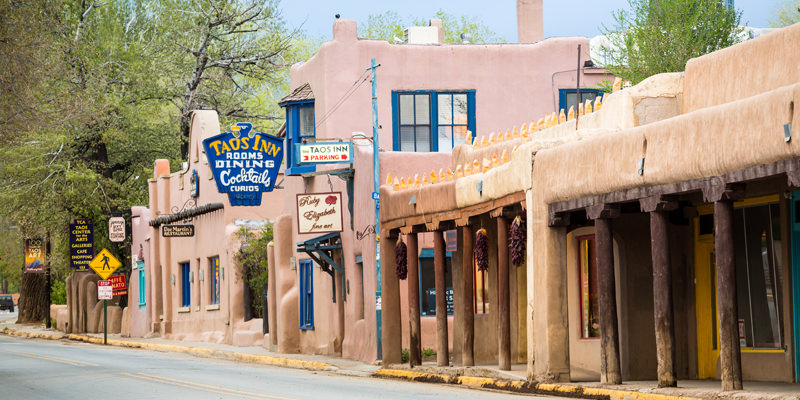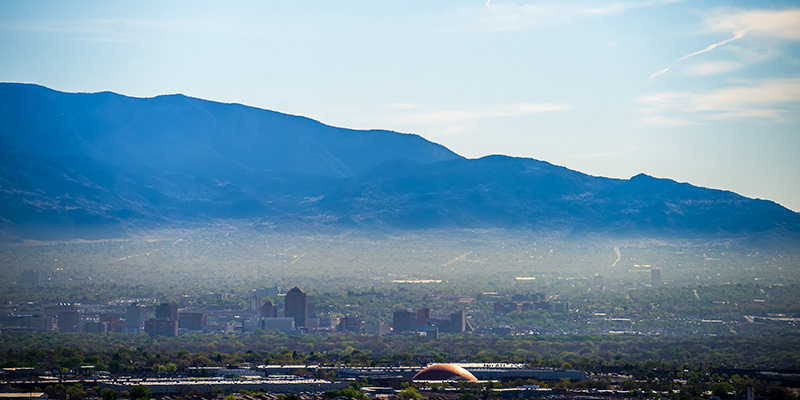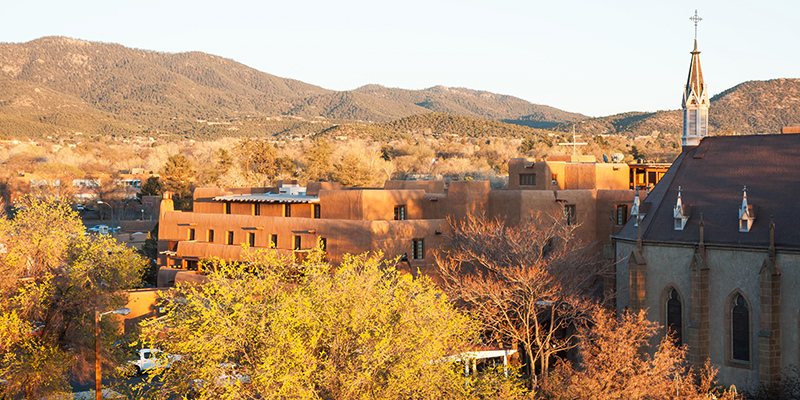It would be difficult to pinpoint a period, since the dawn of time, when food and beverage enthusiasts have had it better than they do today. Yet, sometimes, we still can’t see the table (or the bottle) for the farm. For a certain type of consumer, one who uses organic mustache oil or at least knows someone who does, eating and drinking locally grown products, is given priority over taste. That shift in paradigm has helped local food and beverage sales grow to more than $12 billion in 2014, up from around $5 billion in 2008, according to the USDA. It has also changed the manner in which every food and bev company, large and small, markets its products to the public.
That’s why speaking to Jeff Erway, president and master brewer at New Mexico’s La Cumbre Brewing, arguably the coolest, smartest and most innovative beer-maker in a state fill of offbeat, award-winning brews is so surprising. (Gratuitous stat shot: there are 55 craft makers operating in the Land of Enchantment at last count, and the recent 2016 World Beer Cup awarded three gold medals, two silvers and two bronzes in a competition that included 6,596 beers from 1,907 breweries in 55 countries).
“Our beers are not farm-to-table,” Jeff says, with a palpable, if invisible eye-roll, when asked for examples of locally-grown products in their beer. After a week traveling around New Mexico, sampling liquid gold from the state’s Ale Trail, that bald statement was sobering. When you think of New Mexico, picture green chilis, Eileen Fisher-clad turquoise jewelry-wearing hippies with Merrill Accolades AmEx cards, pueblo culture, Georgia O’Keefe, Breaking Bad. It’s a riotous mix of the indigenous, the Euro, the chic, the down-and-out, snowy mountain peaks, desert valleys, blended into a delicious, hedonistic froth as addictive and spicy as it is distinctive. How could New Mexico not be bursting hipster farmers earnestly nurturing fields of esoteric grains and heirloom hops for dozens of craft brewers in the state?
Don't Miss A Drop
Get the latest in beer, wine, and cocktail culture sent straight to your inbox.“The only local ingredients we use are honey and chilis in some of our recipes,” Jeff continues. “There are almost no commercial hop or barley growers to speak of. The brewing culture exploded here not because we live in a rich grain or hop belt, but because we have good brewers, we invest sweat equity into our breweries and we support each other.”
In other words, actual physical labor, craftsmanship and innovation are given primacy over the laudable but not always purely pleasure-producing priorities of locavorism. With this, instead of drinking, say, a grim hatch-chili flecked fry bread lager-gruel of the type one could imagine would be created if a Brooklyn ethos were transplanted wholesale into the New Mexican craft scene, we get La Cumbre’s Project Dank, a double IPA with a recipe that varies slightly season-to-season, but generally includes Chinook, CTZ, Simcoe, Mosaic, Citra, Sorachi Ace, Meridian hops, Chico Ale yeast, tasting of pine, caramel and ripe citrus, offset with Canadian Superior Pale malt, non caramel specialty malts like Vienna or Melanoidin, and some honey malts thrown in for good measure. The hopping techniques (double dry, wet, etc.) also vary, but the results are uniformly top-notch.
Thanks to the obsession with technique and (Jeff admits) the friendly, but intense competition between local brewers, across the board, IPA’s brewed in New Mexico are juicier, more fragrant and yes – still hoppier – than IPA’s made anywhere else.
The secret is just starting to get out. For the last few years, beer geeks from around the world have been trodding New Mexico’s Ale Trail, giddily gulping down some of the most exciting IPAs (most of which don’t have wide distribution) in the world. Honeyed wheats, bold Reds and powerful, well-rounded Stouts are also on tap.
In 2011, there were just 25 craft brewers in the state, and in 2016, there were 55, according to the New Mexico Brewers’ Guild. By 2018, there will be 72, the guild projects. About 7,100 people are directly employed, more than $154.6 million in federal and state taxes are generated, and the overall economic impact from the beer industry in New Mexico is more than $1.1 billion, according to the Beer Institute. (In a state with the highest rate of child poverty in the country, with 21.3% of its residents living at or below the poverty line it would be impossible to underestimate the life-changing potential of a booming local industry for local residents.)
And unlike New York and California, two states that still get most of the beer press and the lion’s share of the hop-crazed tourists, New Mexico is an under-celebrated, under-utilized destination for culture (Santa Fe alone, the country’s oldest capital city has eight fantastic museums, historic architectural site, ancient pueblos and at least one major food / art / culture festival per month) and all things outdoors, especially hiking, camping and skiing. Plenty of things to occupy your time between happy hours.
Pick any brewery in New Mexico and belly up to the bar, and you are guaranteed to find a more balanced, complex, floral and sophisticated IPA than what you’re used to – and a friendlier bartender to boot.
But if you’re making a special trip, here are our can’t miss New Mexico picks:
Albuquerque:
Downtown Albuquerque, unlike Santa Fe, is not a high end boutique-filled architectural treasure waiting to be unwrapped. The downtown is industrial, even aggressively ugly in spots. But there are pockets of hipster paradise, including the now official “Brewery District” thanks to the beer-makers who have taken over.
La Cumbre: The brewery offers six standards (Slice of Hefen, Pyramid Rock Amber, Elevated IPA, Malpais Stout, Red Ryeot, Project Dank) and rotating seasonals. Jeff says that the philosophy is simple: focus on classics. The job of the brewer he says, to embellish the ingredients with technique, exploring new avenues of flavor slowly and subtly, and “not bashing people over the head” with novel additions, “just because they’re new.” Despite the assertion that the brewery isn’t producing farm to bottle beer, it hopes to. “We are in talks with a maltery in Colorado and we hope to have more local barley soon.
Bosque Brewing: The brewery has a flagship in the district, but it is currently in expansion mode, and since it opened in 2012, it has taken on two satellites and numerous other expansions. Bosque’s Scale Tipper has won a number of awards, including the National IPA Championship. Like other New Mexico IPA’s the blend of Mosiac, Eldorado and Simcoe hops are balanced with a malt backbone, a slight spiciness and citrus and passion-fruit on the tongue.
Santa Fe:
It’s hard to say enough good things about this city: the vibe is eminently laid-back, there are a ton of opportunities to geek out no matter what your passion (especially if it involves art, music, food, architecture) and the uber-luxeness of the hotels and restaurants contrast agreeably with the budget-friendly prices.
Second Street Brewery: The brewery is in one of the coolest districts in the city, the Railyard, with the farmer’s market, galleries and delightful public art projects around every corner. Their Trebuchet IPA, an American Double clocking in at 9.5% just brought home a silver medal at the World Beer Cup, and is beloved by everyone for its highly sippable, clean, creamy flavor. Goes down perfectly with the brewery’s live music and fantastic green chili stew.
Santa Fe Brewery: Founded in 1988, the oldest brewery in the state launched the model that most other beer-makers are following: grow slowly, but surely, invest in equipment and people over marketing campaigns and use an overly long roster of esoteric ingredients. There are eight regulars on tap: Happy Camper IPA, Black IPA, Java Stout, Santa Fe Gold, State Pen Porter, Nut Brown, Pale Ale and Chicken Killer. Seasonals and Barrel-aged Sours also make regular appearances. In 2013, Santa Fe bet the brewery on the farm. They started a hop farm in Rinconada, alongside the Rio Grande. Four varieties of hops (one of which is wild and indigenous to Northern New Mexico, Neomexicanus) are now harvested there and used for one wet hop beer every fall.
Taos:
Situated at the base of Sangre de Cristo on a rolling mesa, Taos is rugged, raw, a vibrant mix of Spanish, Native American and Anglo culture. The Taos Pueblo, an ancient multistory adobe complex still inhabited by Native Americans attracts a steady trickle of admirers. Plus … there’s the skiing.
Eske’s Brew Pub: In a 100-year-old(ish) adobe home, the brewery is beloved for its rustic atmosphere, live music and pub food – and some of the state’s best beer. Its Green Chile Beer is a nod to the local specialty.
Abiquiu:
The starting point of the Old Spanish Trail, it’s a teeny spot on the map, about 53 miles north of Santa Fe, but a worthy stop on a road trip to visit Ghost Ranch (Georgia O’Keefe’s old home).
Abbey Brewing Company: Yep, pretty much what it sounds like. It’s beer made by a Benedictine monastery in the desert called Monastery of Christ in the Desert. The monks grow hops. Then they brew beer in limited quantities with names like Monks’ Ale, Monks Dark Ale, Monks’ Dubbel Reserve. It’s closed the public and is growing slowly, but surely. (In 2006 when they opened, the brewery produced 127 barrels, and they’re up to about 2,900 now). What the monks lack in imagination for snappy names, they more than make up for in brewing ingenuity. The Monks’ Ale, in particular, has the trademark New Mexico panache: beautiful citrus and tropical fruit notes balanced with aggressive hops in the middle, and a clean and dry (but austere) finish.



